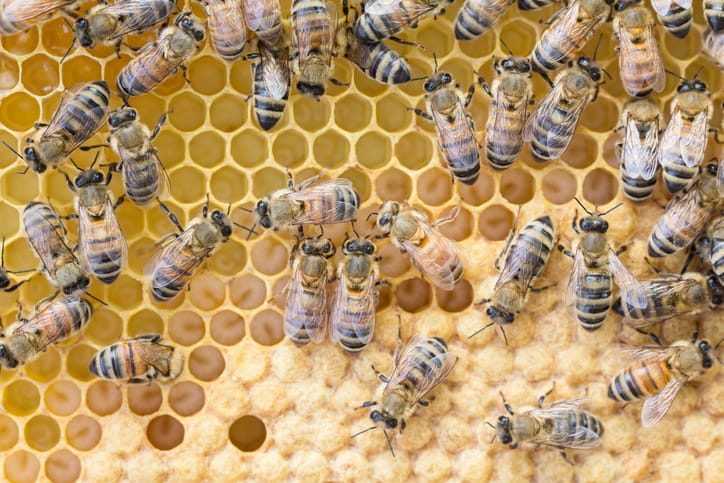With flowers blooming and Mother’s Day just around the corner, spring is finally here! After mixed days of rain and sunshine, trees have finally budded and flowers have bloomed. Alongside that brings an insect that receives mixed reviews: the bee.
In our world, there are close to 20,000 species of honeybees. In the United States alone, about 4,000 species play an integral part in our American ecosystem as pollinators of those budding trees and blooming flowers.
Besides being an essential pollinator to our ecosystem, you may also think of bees as being stinging insects; you may even have a fear of them. But do you know much about their life cycle? Learn about the fascinating life cycle of honeybees with PURCOR Pest Solutions.
The Honeybee Life Cycle: Eggs
A queen bee will begin laying eggs inside a honeycomb when her colony is established. A queen can lay eggs for her whole life after only mating once. They then can lay up to 2,000 eggs each day in the springtime. Bee eggs are about 1 mm long and have a pearly white color.
The Honeybee Life Cycle: Larvae
After three days the eggs hatch into larvae. These creatures have no eyes, wings, legs, or antennae. Some bees inside the hive are assigned the job of feeding these larvae.
Larvae look like white grubs and grow rapidly through a process called metamorphosis. They will grow 1,500 times their size.
The Honeybee Life Cycle: Pupae
A bee’s next stage of life is as a pupa. In this part of the life cycle, the pupa will be sealed in a cell of the beehive with a wax capping. The type of bee determines how long it will stay in the wax-coated cell, but the typical time frame is around 6 – 10 days. In this stage, a bee finally begins to look like a bee.
When it is about to hatch, worker bees place food called royal jelly in their cells. Once it’s fed royal jelly, a pupa hatches from its cocoon and becomes a bee.
The Honeybee Life Cycle: Adult
You are probably most familiar with the form of an adult bee. Once a pupa hatches it is assigned a responsibility that it will perform until it grows old. Common bee roles within a hive include forager, housekeeper, worker, guard, and architect.
The size of an adult bee varies based on its species. Some can be as small as 1/10 of an inch while others can be more than one inch in length. They can vary in color from the common yellow and black to brown or tan.
Bees live in social communities called colonies for their whole lives. Unfortunately, this can make them hard (and dangerous) to remove without pest control professionals.
Keep Bees at Bay with PURCOR
If you suspect you have a colony of bees forming near your residence, contact your professionals at PURCOR. Protecting your home or business from buzzing, stinging pests is our top priority. Get a free quote for bee control today!
"*" indicates required fields
"*" indicates required fields




